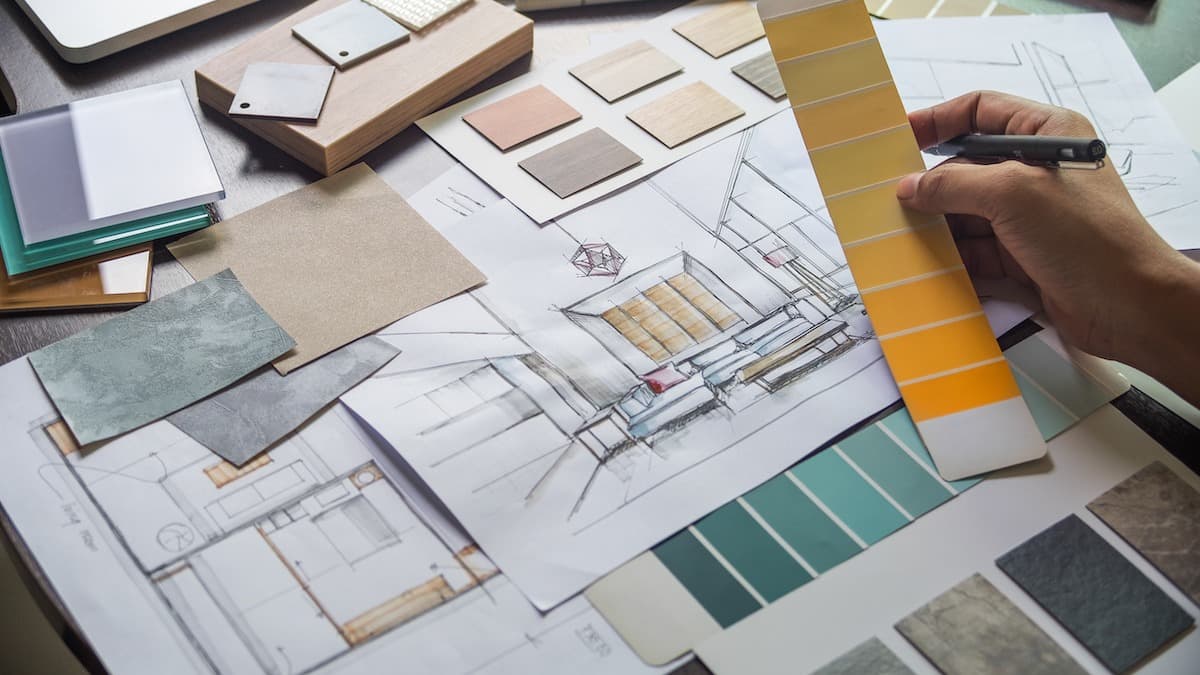Interior Design Basics: 5 Interior Design Tips for Beginners
Written by MasterClass
Last updated: Jun 7, 2021 • 3 min read
Whether you’re making over your home or want to become a professional interior designer, here are tips and interior design basics to get you started.

Jump To Section
- What Is Interior Design?
- The Basics of Interior Design: 3 Design Principles
- 5 Interior Design Tips
- Learn More
- Kelly Wearstler Teaches Interior Design
From color schemes to area rugs, the world of interior design can start to feel overwhelming if you try to dive in all at once. Luckily, there are a few principles of interior design that are a great place to get you started—whether you’re working with a client’s home design or want to give your own home a makeover.
Meet One of Your New Instructors
What Is Interior Design?
Interior design is a profession that focuses on architecture and space planning, creating cohesive and aesthetically pleasing designs for home interiors and businesses. Professional interior designers require focused schooling and formal training.
The Basics of Interior Design: 3 Design Principles
When getting started with your designs, there are a few interior design basics to keep in mind:
- 1. Style. Selecting an interior design style in the beginning will help you keep your space cohesive and focused. There are plenty of decorating styles to choose from—like shabby chic, Tuscan, mid-century modern, industrial, Scandinavian, or farmhouse—and many of them come with their own, unique design elements, color schemes or color palettes, window treatments, floor plans, and even styles of wall-art. Acquaint yourself with several different styles, including what design trends are popular right now, to get a taste for what styles and decorating ideas you like.
- 2. Focal point. Each room should have a focal point: an interesting or beautiful piece—such as a piece of art, a fireplace, or a nice couch—that draws viewers’ attention. Take care not to go overboard here: if you have too many focal points in a living space, it will start to feel overpowering and unfocused.
- 3. Balance. To achieve balance in every room, you’ll need to distribute the visual weight of your furniture and accents. Consider scale (large and small items), texture (hard and soft items), and position (high, eye-level, and low placement, and left and right placement). If you pay attention to subtle contrasts in a single space, you’ll be able to create rooms that feel complete and balanced.
5 Interior Design Tips
Feeling ready to dive in to the world of living rooms and coffee tables? Here’s a quick beginner’s guide to getting you started with your next interior design project:
- 1. Spend carefully. When you’re just getting started in interior design, it’s best to take things slow and decide which items will be your big-ticket ones. A good rule of thumb is that the best pieces of furniture to splurge on are couches and beds—they’re visually heavy items that will draw attention, so you want them to look nice. Once you’ve found those, you can fill in the gaps with your accent items and DIY home decorating.
- 2. Remember to think about lighting. A well-designed room can be spoiled by improper lighting, so make sure to factor lighting into your budget. Windows (for natural light), floor lamps, overhead lights, accent lighting, and white- or light-colored walls and furniture are all great ways to open up a dark or small space.
- 3. Make good use of accent pieces. Some interior designers focus on the “big” pieces in a room—things like couches, rugs, dressers, and tables—and forget about the small things. Accent pieces are a great way to make a room feel more personalized and more visually interesting, so keep an eye out for things like bowls, books, and other decorations you can use to jazz up shelves and coffee tables.
- 4. Give your furniture room to breathe. When you get a new piece of furniture, it’s a natural inclination to push it up against the wall—but this can make a room feel stiff and flat. Instead, keep your furniture at least a few inches away from the walls to give your room an airier feeling.
- 5. Your home is not a showroom. If you’re currently working on your own home’s decor and interior, don’t try to make it look like the professional photos you see online or in interior design classes—those are meant to show off design principles and furniture rather than be lived in. Instead, throw in more eclectic or sentimental pieces so that your house has the perfect balance of gorgeous design and liveability.
Learn More
Learn interior design from award-winning designer Kelly Wearstler. Make any space feel larger, cultivate your own distinct style, and create spaces that tell a story with the MasterClass Annual Membership.
